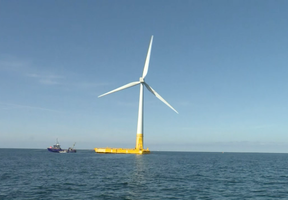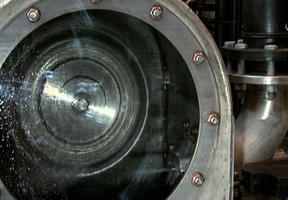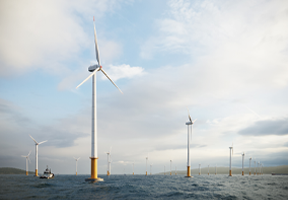Potential Arctic Routes
5 min read
The melting ice pack has raised the possibility of opening up two Arctic shipping routes between the Atlantic and the Pacific during a few weeks each summer.

© 5ème Gauche - Skeleton map showing the northwest (orange) and northeast (red) sea lanes. The shaded areas are the regions that are sometimes free of ice, depending on the season.
The Northwest Passage and the Northern Sea Route
The gradual melting of sea ice during the summer could potentially open up two shipping lanes to the east and west of the North Pole:
- The 1,500-kilometer-long Northwest Passage runs via waterways between the various islands of the Canadian Arctic Archipelago, past Alaska and through the Bering Strait into the Pacific Ocean. The passage, which is sometimes obstructed by ice all year round, has not been used very often. A few merchant vessels navigated it in 1969, 1970 and 2008.
- The Northern Sea Route, formerly known as the Northeast Passage, runs from the Barents Sea past the frozen Russian archipelago of Severnaya Zemlya, along the coast of eastern Siberia and on through the Bering Strait into the Pacific Ocean. It has been used regularly, mostly by military vessels. In 2010, a Russian called the SCF Baltica was the first to complete the passage from Murmansk to a Chinese port. However, it was an experimental voyage, entailing special safety precautions that would be hard to replicate on a regular basis.
Apart from the ice problem, both sea lanes pass through shallow straits, some of which are less than 10 meters deep.
The Benefits of Arctic Routes
These “shortcuts” shave several thousand kilometers off the voyage between the two oceans, resulting in significant savings of and time. On a trip from Rotterdam to Shanghai for example, an Arctic route would cut 3,200 kilometers and four days off a typical passage through the Suez Canal and the Strait of Malacca.
These corridors would also make it easier to provide more efficient shipping services in the resource-rich Russian Arctic and subarctic region. Oil and gas from the large Shtokman, Yamal and Varandey fields could be shipped directly to Asia, representing a savings of 8,000 to 10,000 kilometers and 14 days.
Besides the time savings, the new lanes would reduce fuel oil consumption and related carbon emissions.
Technical and Weather Obstacles
While the benefits are obvious, the difficulties are many.
There is no port infrastructure along the Northwest Passage and the route is sometimes blocked the entire year. Canada announced plans to build a deepwater port in Nanisivik, but the details of the project are somewhat vague. Legal issues have also arisen: Canada claims that the route is located in its internal waters, thereby exempting it from compliance with international law regarding the right of innocent passage.
Although the Northern Sea Route is more feasible, the presence of icebergs even during the shipping window of a few weeks during the summer requires Russian icebreaker escorts, which are not always available. The passage is often foggy, weather conditions are often harsh and sea charts are inaccurate. In addition, ships must be purpose-designed for the icy conditions and meet Russian standards.
Moreover, in the event of an accident or spill, emergency responders would have to deal with conditions that are totally unlike those found anywhere else. Consequently, insurance premiums are likely to be high.
Even though oil tankers won’t be navigating the Arctic any time soon, the topic is on the agenda1. Further studies are being conducted — particularly on the Northern Sea Route — to find itineraries that avoid the shallowest straits and to develop infrastructure and logistics solutions to overcome the technical obstacles. Some shipyards, particularly in Norway, have begun building vessels with reinforced hulls for Arctic use.





















